There are many different types of fungus on the human feet called thrush. When the skin is affected, it is called a group of dermatological diseases (epidermis, trichophytosis), since the epidermis is translated from the Greek word as skin. If the nail is affected, the disease is defined as onychomycosis.

The cause of the disease
Fungus in the feet is a common disease that occurs around the world. More common in cities than in countryside. The risk group for foot fungus includes athletes, shower workers and hot shop staff. Children with thinner skin that is not protected from external factors are also susceptible to scalp fungus. Another cause is due to increased sweating of the feet, due to diseases in the body or congenital localization. Dermatologists believe that the risk of developing foot fungus increases with age. Factors that cause the disease:
- wearing uncomfortably closed leatherette shoes;
- warm environment with high humidity, characteristic of wearing shoes;
- violation of blood supply to the extremities;
- frequented crowded places;
- weak or malfunctioning immune system;
- wearing strange shoes.
Infection rapidly
Fungal foot skin disease is easily spread in public places from sick to healthy people. Infection occurs through contact surfaces: floors, household items, toiletries, and shoes. Fungi are transmitted by direct contact, they multiply very quickly, which is why they are so susceptible to infection. Cases of fungal transmission in the salon through pedicure tools, as well as towels, are not excluded. The disease affects the skin of the feet. It is especially popular among men, as they spend most of their time in closed shoes. Regular visits to the gym, bathrooms, military service, where you don't always have to wear your own shoe size - all of this facilitates the reproduction of pathogenic bacteria. Non-ventilated room area will be beneficial for fungal pathogens to multiply. The spread of pathogenic flora is very rapid. The main places where fungi grow is between the toes and between the toes. Saunas and bathrooms are characterized by high humidity and high temperature, making them ideal for the growth of pathogenic microflora.
Fungal infections can be direct and indirect. In person, you can become infected through direct contact with sick people. Indirect contamination involves the use of objects that have been used by sick people.
Manifestation of mycoses
The first symptom of the disease is scaly skin on the feet. Through these factors, infection occurs. Increased perspiration is a favorable factor for the reproduction of bacteria, since the altered sweat composition becomes nutrients for the growth of pathogenic flora.
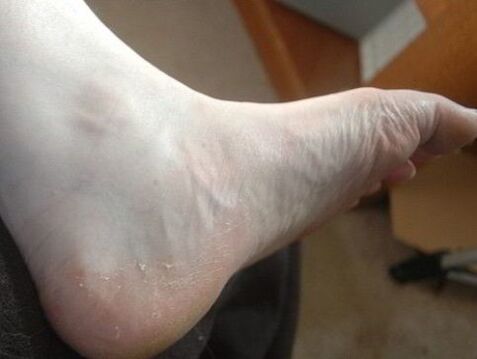
Dirt and sludge just from socks also collects between the toes. When a fungal infection is added to the listed factors, redness appears there. The genital area begins to itch and become uncomfortable, causing discomfort for the patient. The skin begins to flake and painful cracks appear. When walking, there are painful and unpleasant sensations caused by the injured skin of the foot. The skin begins to thicken, and the infection can spread to the nails. If left untreated, the fungal disease spreads and affects the nail, destroying them. First, the nail plate changes color to white. Then it may come off. Raises form between the foundation plate and the foundation bed. Fungal in the legs, unpleasant odor appears. In winter, when wearing closed shoes, the feet are not ventilated, the intensity of foot damage increases. In order to treat this pathology, an accurate formulation of the correct diagnosis is required, because there are so many pathogenic fungi.
Main diseases
- Membrane type (intertriginous) is the most common. Fungal infections are observed between the fifth and fourth toes. Gradually, the skin acquires a scaly structure with elements of fissures. Sometimes a bacterial infection combines with a fungus, causing even more damage to the skin of the feet.
- Kind of like mocasin. Manifested by pain in the feet. Then the skin thickens, thickens and cracks. Severe fungal lesions that attach to the nail can begin to scab over time.
- Blisters form (indigestion form). It is manifested by the appearance of blisters under the skin, filled with fluid. It usually progresses with a bacterial infection.
The fungus on the feet has a name
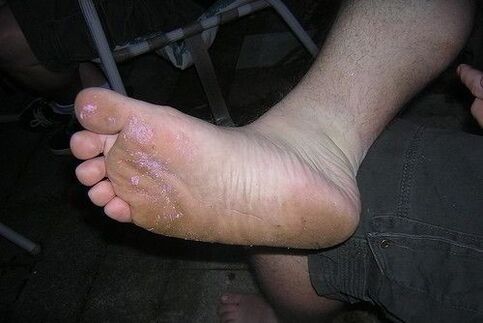
There are different types of fungi, they correspond to many different diseases. There are four most common types of fungus that cause foot damage.
- Trichophyton rubrum (Trichophytonrubrum) is fraught with rubrophytosis.
- Trichophyton interdigitale disease (Trichophytoninterdigitale) affects the skin between the fingers, involving the entire foot in this disease. Causes epidermal diseases.
- Trichophyton mentagrophytes lead to complete epidermal intoxication.
- Candida albicans is a female fungus. Candida fungal disease of the feet is caused, but this is very rare.
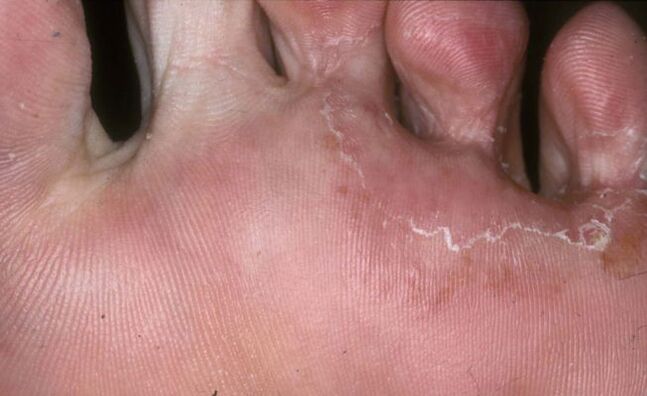
Fungal skin diseases and trichophytosis (rubromycosis) are skin diseases collectively known as fungal foot disease, caused by parasitic fungi of the genus Dermatophytes.
Classify
Dermatophyte fungus:
- microparticles;
- epidermis;
- t.
Mold causes fungal pathogens:
- hendersonula;
- altemaria;
- S.
Fungi cause yeast disease:
- pennywort;
- candidiasis;
- bile;
- malassezia;
- coccidoides;
- histoplasma;
- w.
Precautions
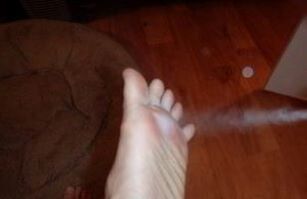
Since fungi prefers warm, humid habitats, that means it is necessary to violate these conditions in order to get rid of them. So to prevent fungus, the feet must be clean and dry. It is important to change socks and dry shoes on time. There are special antiperspirants on sale that will inhibit the growth of pathogenic microflora. It is better to choose leather shoes to maintain the normal metabolism between the foot and the environment. Your feet will sweat less, not facilitate fungus to reproduce. Wear socks at home, take them off and wash them, as bacteria and dirt will build up on shoes at home.
It is necessary to use only your own things, since you are unaware of the presence of another person's disease. Your immunity may not be able to fight off pathogens and infections. You need to clear your shoes more often. When going to public places, bring personal hygiene items. Never walk barefoot on the floor in swimming pools and showers. The use of preventive antifungal creams and ointments also works. After all, swimming pools, changing rooms, saunas, and other rooms with high humidity are a breeding ground for fungi. At home in the bathroom, it is better to reject the foam carpet.
Risk group
Some people are more susceptible to this disease than others. This could be due to problems in the body, such as:
- excess weight;
- violation of blood circulation in the legs;
- flat feet and foot defects;
- immune system impairment;
- people under stress;
- after antibiotic treatment.
Diagnose the foot fungus disease
The doctor conducts a detailed examination of the foot, asking for complaints. Skin samples are taken from the patient for fungal testing. A piece of leather obtained from a small, specially crafted scratch on the foot. For analysis, the nail is cut from the site of the fungal infection. The presence of fungal diseases is determined by special tests. To identify the fungus, it is grown, that is, it is grown. In rare cases, with the severe stage of the disease, the patient may be prescribed a biopsy. In this case, the prepared material is examined under a microscope.
Treatments
In order to get results from treatment, it is necessary to clarify the type of fungus and the presence of the infection, if any, has been involved with it. The level of damage is also taken into account.
The basis of membrane therapy is like applying antifungal agents to the affected area. It is convenient to do this even at home. These drugs stop the growth of bacteria or slow the spread of the disease. Many of these are available without a prescription. Activity of the substances takes place locally, at the site of application on the affected area of the skin. It is important to monitor the dynamics of treatment, if there is no improvement, the medication may not help you.
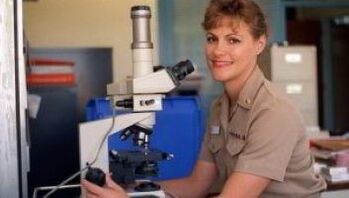
If there is no effect from the agent used, it is necessary to see a dermatologist for other treatment options. You may need to prescribe a stronger medicine. In particularly severe cases of the course of the disease, tablets are prescribed. Many drugs have side effects, so it is important to monitor your blood count during pill therapy. The fungus is very difficult to cure completely because it can recur. Treatment should not be interrupted, otherwise the fungus may develop resistance to the components of the drug that affect them. During the treatment, it is necessary to monitor the cleanliness and dryness of the feet. With a moccasin-like infection, onychomycosis, that is, nail damage is very common. Because the skin of the feet is thickening, the drug is difficult to penetrate inside, so this disease is more difficult to treat. In this case, "inactive" standard drugs and complementary therapy in the form of pills are prescribed. Onychomycosis - toenail damage caused by a fungus of the genus Dermatophytes. The disease can also be caused by yeast or mold. There are several types of onychomycosis:
- Near vicinity. Depending on the area of the nail damage, one can distinguish three levels of damage, if the nail is presented in one part and conditionally divided into three parts (according to depth), the lesion accounts for two thirds. The volume will correspond to the first two stages of the disease. And when more than 2/3 of the nails are fungus, this is already level 3. In this case, the base of the nail (matrix) is involved in the pathological process, and sometimes there are also folds of skin on either side of the nail, called the ridges around the nail;
- accessory tendons. Failure of the back of the nail plate, where there are holes;
- white appearance. This onychomycosis is most common in the feet;
- total dystrophy. Final finishing stage.
For blisters, your doctor may prescribe removal of the tip of the blister. Then all the liquid flowing out of them is seeped out. The area is dried, an antifungal cream or a special gauze is applied to it. If the presence of the infection is confirmed, then an antibiotic course will be prescribed. Sometimes the illness is accompanied by a fever. Acute infections respond to treatment better than chronic and slow fungal processes. In severe cases, hormonal drugs are prescribed. Antifungal medication is taken until complete recovery. What happens is that not all fungi die, and when the drug is canceled, the disease returns.
If the patient is left untreated, the disease becomes chronic and will develop into a serious infection. In addition to the feet, the skin of the toes may be linked to the disease.
Traditional medicine offers compresses and creams for the treatment of nail fungus using tea tree oil, which has anti-inflammatory effects, as well as garlic. Washing with regular detergent does not always kill disease-causing bacteria. To remove fungus from clothing, linens should be washed with hot water or boiled if possible. We recommend using bleach and hot iron.


























